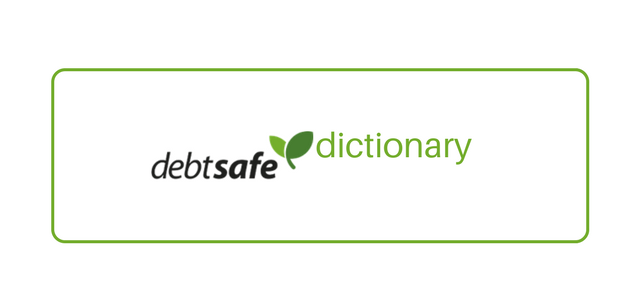A short dictionary of the terms you’ll come across in Debt Review, Debt Counselling and Debt Consolidation.
Alternatively known as the Debt Review Application Form.
This is your Debt Review Application Form as required by the National Credit Act (NCA). Your Debt Counsellor needs this form to assess your financial situation. Your Debt Counsellor will also be expected to verify the application’s information through supporting documentation from you and your creditors – just to double check that the information is accurate so that the best repayment plan can be prepared for you.
Once your Debt Review application has been completed your Debt Counsellor is required by the National Credit Act to let your creditors and the credit bureaus know that you have formally applied for Debt Review.
This communication is done through a Form 17.1 and is sent to your creditors within 5 business days after the completion of your Debt Review application.
Your Debt Counsellor will do an in-depth evaluation of your financial situation to determine whether you legally qualify for Debt Review.
Once your Debt Counsellor has completed the evaluation they will send out a Form 17.2 which then states whether you are over-indebted and whether you would benefit from Debt Review. This form is then sent to your creditors and the credit bureaus.
Alternatively known as the Cancellation Form.
Whether a Debt Review is cancelled voluntarily or involuntarily the National Credit Act (NCA) requires that a Debt Review Cancellation Form is completed.
There are serious considerations to make before cancelling your Debt Review. These include the following:
- A cancellation fee of 75% of the debt restructuring fee is payable if you have not yet paid your first instalment and your repayment plan has been calculated.
- The original credit agreement is re-established, and your credit providers are free to proceed to enforce their rights. This could lead to immediate legal action against you.
- You will not receive your Clearance Certificate that clears your credit record.
- It will be much harder to apply for Debt Review in the future.
Alternatively known as your Clearance Certificate.
This is your key to your new beginning and what you are working towards in your Debt Review. Your Clearance Certificate will be issued when:
- All your accounts listed under Debt Review have been settled.
- You are able to carry on with the original agreements you have with your creditors.
- All your accounts are paid up, except for your home loan (your home loan must be paid up to date as per your Debt Review agreement).
Your Clearance Certificate will be sent to you and the credit bureaus, who are then required by the National Credit Act to clear your credit record.
When you are in arrears with a credit agreement, the In Duplum rule regulates the amount that you are responsible to repay to that creditor. Its aim is to prevent the creditor from demanding an unlimited amount (unlimited interest) of repayment from individuals who have fallen behind on their credit agreement.
There are two In Duplum Rules:
1. The common law In Duplum Rule.
2. The statutory In Duplum Rule in section 103(5) of the Act.
1. The Common Law In Duplum Rule:
Your debt’s interest will stop to run when the total amount of the arrear interest has accumulated into an amount equal to the outstanding principal debt.
So in the common law In Duplum Rule the amount repayable is:
- The outstanding amount at the time when you fell behind on payments.
- And interest equal to the amount of the outstanding amount at the time when you fell behind on the payment.
(If you have been charged the maximum amount allowed and then repay some, but not all, of the arrears, interest could be charged again until the maximum amount is reached once more).
This rule applies to:
- Debt that isn’t a credit agreement.
- Credit agreements entered into before 1 June 2007.
2. The Statutory In Duplum Rule
This Rule takes the creditor’s initiation fee, service fee, interest, credit insurance, default admin charges and collection costs into account when calculating the maximum repayable amount.
So, the amount you will have to repay is:
- The principal debt that is still due at the time you fell behind on your payments.
- Plus the above-mentioned fees, which will be equal to the principal debt that is still due.
Please note, however, there is still a disagreement between Debt Counsellors and Creditors on how this rule should be enforced. Therefore, the enforcement of this rule will be problematic until a Court provides a judgement about the rule and its implementation.
